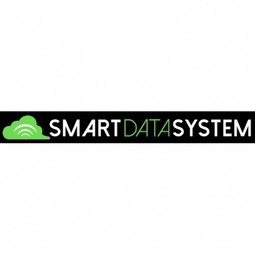下载PDF
Optimizing Energy Utilization (Barcelona City Council)
.png)
技术
- 功能应用 - 远程监控系统
- 网络与连接 - 网关
- 平台即服务 (PaaS) - 数据管理平台
- 传感器 - 电表
适用行业
- 城市与自治市
适用功能
- 设施管理
用例
- 建筑能源管理
挑战
巴塞罗那市议会管理着大约 2000 座市政建筑,正如预期的那样,能源支出非常高。因此,目标是密切监视和控制这些建筑物如何消耗能源,在某些情况下,如何生产能源。具体而言,其目的是确定多户建筑中太阳能热系统产生的能源的利用程度。该项目包括控制和监测 28 个太阳能热系统。它分为三个阶段;试点阶段监测 4 个初始站点,第二阶段增加了 16 个站点,第三阶段包括最后 8 个站点。
客户
巴塞罗那市
关于客户
巴塞罗那市议会。
解决方案
在试点阶段,负责管理系统运行的主控制器受到监控,以定期分析其正在执行的操作。鉴于主控制器不允许外部通信,因此部署了一套新的温度传感器和能量计,以测量系统产生的能量。然后,该设备通过提供连接的网关将收集到的数据传输到智能数据系统监控平台。在随后的阶段,主控制器被 CARLO GAVAZZI 制造的 SH2WEB24 取代,这是控制器的增强版本,不仅允许智能数据系统平台执行监控任务,还可以向设备发送指令。有了这个新控制器,现在可以直接连接现有设备。最后一步是分析所有收集的数据,然后生成有助于改进系统设置、检测故障设备并在发生异常情况时发送警报的报告。
收集的数据
Energy Consumption Rate, Energy Production, Fault Detection, Solar Power, Temperature
运营影响
数量效益
相关案例.

Case Study
Turning A Stadium Into A Smart Building
Honeywell created what it called the “intelligent system” for the National Stadium in Beijing, China, turning the venue for the opening and closing events at the 2008 Summer Olympics into a “smart building.” Designed by highly controversial artist Ai Weiwei, the “Bird’s Nest” remains one of the most impressive feats of stadium architecture in the world. The 250,000 square meter structure housed more than 100,000 athletes and spectators at a time. To accommodate such capacity, China turned to Honeywell’s EBI Integrated Building Management System to create an integrated “intelligent system” for improved building security, safety and energy efficiency.
.png)
Case Study
Smart Street Light Network (Copenhagen)
Key stakeholders are taking a comprehensive approach to rethinking smart city innovation. City leaders have collaborated through partnerships involving government, research institutions and solution providers. The Copenhagen Solutions Lab is one of the leading organizations at the forefront of this movement. By bringing together manufacturers with municipal buyers, the Copenhagen Solutions Lab has catalyzed the development and deployment of next-generation smart city innovations. Copenhagen is leveraging this unique approach to accelerate the implementation of smart city solutions. One of the primary focus areas is LED street lighting.

Case Study
Buoy Status Monitoring with LoRa
The Netherlands are well-known for their inland waterways, canals, sluices and of course port activities. The Dutch Ministry of Infrastructure indicates that there are thousands of buoys and fixed items in and near water environments that would profit from IoT monitoring. One of the problems with buoys for example, is that they get hit by ships and the anchor cable breaks. Without connectivity, it takes quite some time to find out that something has happened with that buoy. Not to mention the costs of renting a boat to go to the buoy to fix it. Another important issue, is that there is no real-time monitoring of the buoys at this moment. Only by physically visiting the object on the water, one gains insight in its status.

Case Study
China Mobile Smart Parking
Smart Parking, powered by NB-IoT technology, is making it easier for drivers to find free parking spots. Cities can better manage their parking assets and maximize the revenue available to them as a result. Drivers searching for parking create congestion and pollution by circling and hunting for available parking. Smart Parking services are able to significantly ease these problems by guiding a driver directly to a parking space.

Case Study
Barcelona Case Study
Barcelona’s heavy traffic and its associated high levels of pollution were the primary factors that motivated some companies and universities to work on strategies for improving traffic in the city centre. Bitcarrier is one of the technologies involved in the In4Mo Project, whose main objective is to develop the applications that form the core of smart mobility, one of the fundamental pillars of the smart city concept.






